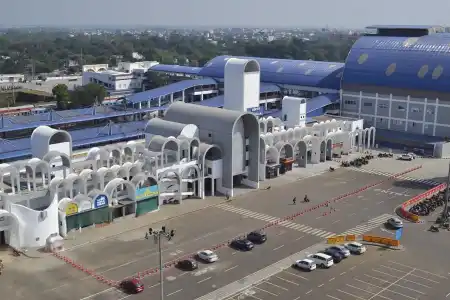India’s vast railway system has stepped into a new chapter with the upgrade of Rani Kamalapati Station in Bhopal. The station, earlier known as Habibganj, is now the first in the country to be run by a private operator, raising the level of comfort and service for huge numbers of passengers.
The station sits in the heart of the city and functions under a public private partnership. Indian Railways keeps ownership, while a private group manages daily operations and maintenance. This shift followed a complete redevelopment carried out by the Bansal Group along with the Indian Railway Stations Development Corporation.

The station now offers a modern layout, efficient movement, and spaces that support many different uses. A climate controlled concourse, fast elevators, steady power, and clean drinking water systems welcome travellers as they enter. There is wide covered parking, a range of shops, food outlets, meeting rooms, business facilities, and a hotel connected to the station.
Accessibility has been built into every part of the space. Automated ticket machines, clean platforms, and clear signs make it easier for passengers to move through the station without stress.
The design goes past the usual functions of a railway station. It includes a super speciality hospital and showrooms for vehicles, showing an idea of what future transport hubs across India could become.
Rani Kamalapati Station serves major trains such as the Vande Bharat Express, Rajdhani Express, Shatabdi Express, and Duronto Express. Through these routes, Bhopal stays well connected to key cities across the country and strengthens its place in the national network.
With more than seven thousand stations and millions of daily users, this project shows how much can change when modern thinking is applied to rail infrastructure. It reflects the larger effort within Indian Railways to improve comfort and raise service standards everywhere.
Encouraged by the results here, the government is now considering similar redevelopment plans for important stations in New Delhi, Ahmedabad, and Mumbai CST. The work done at Rani Kamalapati is set to guide the next wave of railway station upgrades in India.
